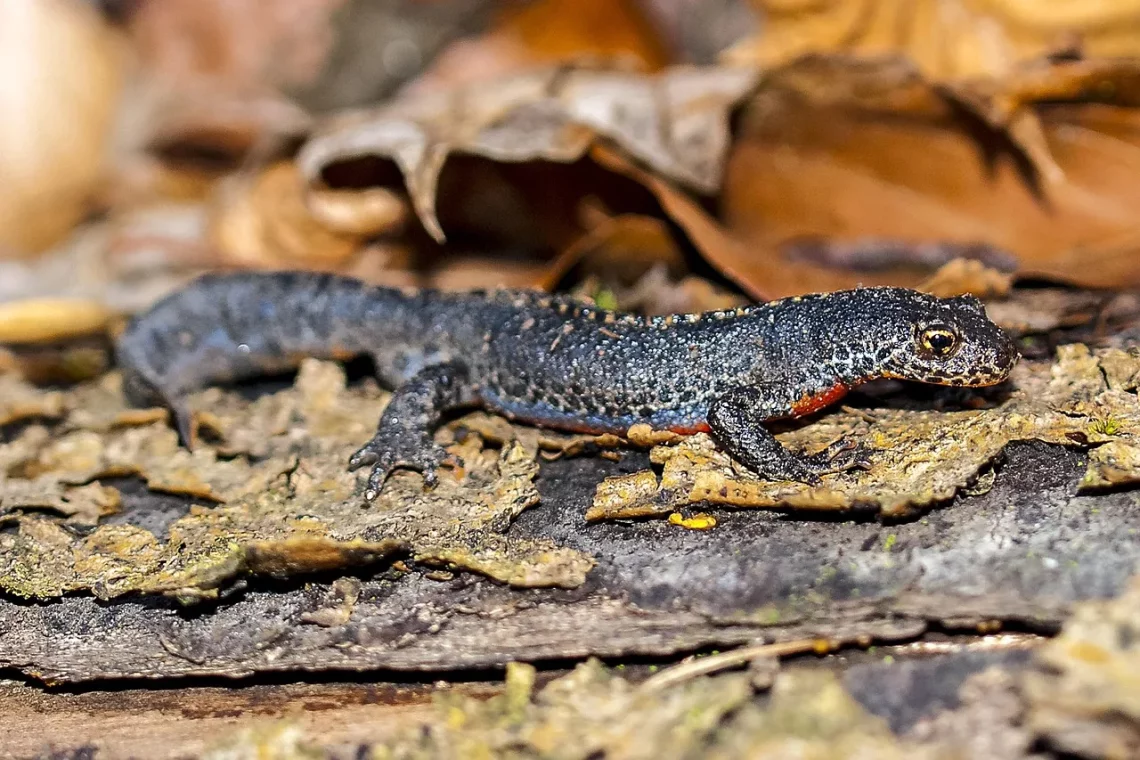
Discovering the Fascinating Life of the Red Bellied Newt
The red-bellied newt, a captivating amphibian, has intrigued naturalists and wildlife enthusiasts alike for generations. This small creature, native to North America, is a remarkable example of nature’s diversity and adaptability. Found primarily in the moist habitats of the eastern United States, particularly in regions with ample freshwater sources, these newts exhibit a fascinating array of behaviors and characteristics that set them apart from other amphibians. Their vivid coloration, especially the striking red hue on their bellies, serves as a warning to potential predators about their toxicity, a clever survival strategy honed through evolution.
But beyond their vivid appearance, the life cycle, habitat preferences, and ecological significance of red-bellied newts reveal a deeper story about the interconnectedness of species within their ecosystems. These creatures play a crucial role in maintaining the balance of their environments, and understanding their life can help shed light on broader ecological themes, such as conservation efforts and habitat preservation. In an age where many species face threats due to habitat loss and climate change, the red-bellied newt stands as a symbol of both the fragility and resilience of wildlife. This article delves into the unique aspects of the red-bellied newt’s life, exploring its biology, behavior, and the challenges it faces in today’s world.
Habitat and Distribution of the Red-Bellied Newt
The red-bellied newt thrives in a variety of freshwater habitats, including ponds, lakes, and slow-moving streams. These environments are typically characterized by their abundant vegetation, which provides essential cover and breeding grounds for these amphibians. The presence of soft, moist soil is also crucial, allowing for easy burrowing and the creation of nests during the breeding season.
Historically, red-bellied newts were predominantly found in the eastern regions of the United States, from Maine down to Florida and as far west as parts of Texas. However, their distribution has been affected by environmental changes and habitat fragmentation. Urban development, pollution, and agricultural expansion have all contributed to the decline of suitable habitats for these newts. Consequently, conservation efforts are necessary to protect their remaining habitats and ensure their survival.
Moreover, the red-bellied newt’s life cycle is intricately linked to its habitat. They undergo a fascinating metamorphosis, transitioning from an aquatic larval stage to a terrestrial adult. This duality in their lifestyle requires access to both aquatic and terrestrial environments. During the breeding season, which typically occurs in spring, adult newts return to water to mate and lay eggs. After a short aquatic larval stage, the young newts will eventually make their way onto land, where they will spend much of their adult lives before returning to the water to reproduce.
Understanding the habitat needs of the red-bellied newt is vital not only for their conservation but also for the health of the ecosystems they inhabit. As an indicator species, their presence indicates a healthy environment, while their decline can signal underlying ecological issues that may also affect other species.
Physical Characteristics and Adaptations
The red-bellied newt is easily recognizable due to its distinctive physical features. Its most striking characteristic is the bright red or orange coloration of its belly, which serves as a warning to predators about its toxic nature. This aposematic coloration is crucial for its survival, as it deters potential threats and helps ensure that the newt can thrive in its environment.
Aside from its vivid coloration, the red-bellied newt possesses a smooth, elongated body that can reach lengths of up to four inches. Their skin is moist and permeable, allowing for efficient respiration and moisture absorption, which is essential for their survival in both aquatic and terrestrial environments. The newts have webbed feet that aid in swimming, while their strong limbs enable them to navigate through vegetation and other terrestrial obstacles when they are on land.
Another fascinating adaptation of the red-bellied newt is its ability to regenerate lost limbs. This remarkable trait is not unique to newts, but they exhibit it to a significant extent. If a newt loses a limb due to predation or injury, it can regrow a new one over time. This regenerative ability highlights the adaptability of these creatures and their capacity to recover from environmental challenges.
In addition to their physical adaptations, red-bellied newts have developed a fascinating behavior pattern that further enhances their survival. During the day, they often seek refuge under rocks, logs, or leaf litter to avoid predators and maintain moisture levels. At night, they become more active, foraging for food and exploring their surroundings. Their diet primarily consists of small invertebrates, such as insects and worms, which they hunt using their keen senses.
These physical characteristics and adaptations not only make the red-bellied newt a fascinating subject of study but also highlight the intricate ways in which species evolve to thrive in their specific environments. Understanding these traits can provide insight into the importance of biodiversity and the need for conservation efforts in preserving these unique amphibians.
Behavioral Patterns and Social Structure
The behavior of red-bellied newts is as intriguing as their physical adaptations. They are primarily solitary creatures, but they exhibit interesting social behaviors during the breeding season. During this time, males engage in courtship displays to attract females, which may include elaborate movements and color displays. These behaviors are crucial for successful mating, as they help males demonstrate their fitness and appeal to potential mates.
Additionally, red-bellied newts are known for their territorial behaviors, particularly during the breeding season. Males may establish territories in the breeding ponds and engage in aggressive displays to ward off rival males. This territoriality ensures that they have access to potential mates and can successfully reproduce. Understanding these social dynamics is essential for conservationists, as maintaining healthy populations may rely on understanding their breeding behaviors and territorial needs.
Feeding behavior in red-bellied newts is also noteworthy. They are opportunistic feeders, primarily consuming small invertebrates such as insects, crustaceans, and worms. Their feeding habits are largely nocturnal, as they hunt for food during the cooler, damp nights when their prey is most active. The ability to adapt their feeding behaviors to their environment is crucial for their survival, especially in areas where food availability may fluctuate due to environmental changes.
Social interactions among red-bellied newts are relatively limited outside of the breeding season. They are generally non-aggressive towards one another and tend to avoid confrontation, preferring to retreat to their hiding spots when threatened. This behavior may contribute to their survival, as it reduces the risk of injury and allows them to maintain a low profile in their habitats.
Overall, the behavioral patterns of red-bellied newts reflect their adaptability and the intricate balance of their ecosystems. By understanding these behaviors, researchers and conservationists can better appreciate the complexity of their lives and the importance of preserving their habitats for future generations.
Conservation Status and Threats
The red-bellied newt, like many amphibian species, faces various threats that have contributed to its declining populations in certain areas. Habitat loss is the most significant threat, primarily due to urban development, agriculture, and pollution. As natural habitats are transformed for human use, the available space for these newts diminishes, leading to population fragmentation and isolation.
Climate change also poses a threat to the red-bellied newt. Altered rainfall patterns, increased temperatures, and changing seasonal dynamics can impact their breeding cycles and habitat availability. For instance, drying ponds and streams due to prolonged droughts can prevent successful reproduction and lead to a decline in their numbers. Additionally, changes in temperature can affect their metabolic rates and overall health.
Pollution is another critical concern, as contaminants from agricultural runoff and industrial activities can harm aquatic ecosystems. These chemicals can impact the quality of the water in which red-bellied newts breed and live, leading to reduced reproductive success and increased mortality rates. Furthermore, the introduction of non-native species into their habitats can disrupt the food chain and introduce competition for resources.
Conservation efforts are essential to protect the red-bellied newt and its habitat. Initiatives focused on habitat restoration, pollution reduction, and public awareness are crucial in ensuring the survival of this unique amphibian. By creating protected areas and implementing sustainable land-use practices, we can help mitigate some of the threats these newts face.
In conclusion, the red-bellied newt serves as a vital indicator of environmental health, and understanding its challenges can lead to broader conservation efforts that benefit entire ecosystems. The future of this captivating amphibian depends on our commitment to preserving its habitats and addressing the threats it faces in a rapidly changing world.
It is important to note that this article is not intended as medical advice. For any health-related concerns or issues, please consult a qualified healthcare professional.




